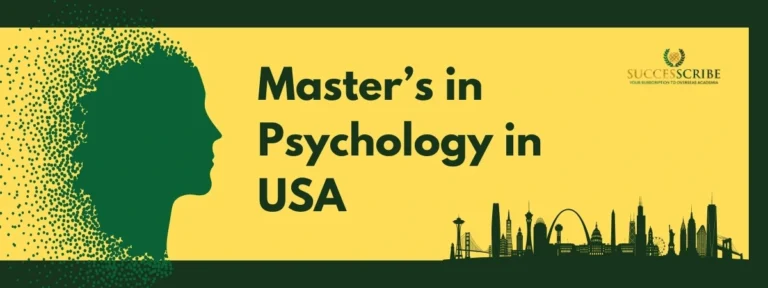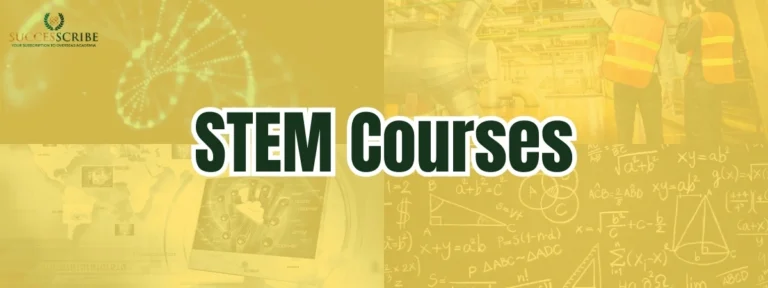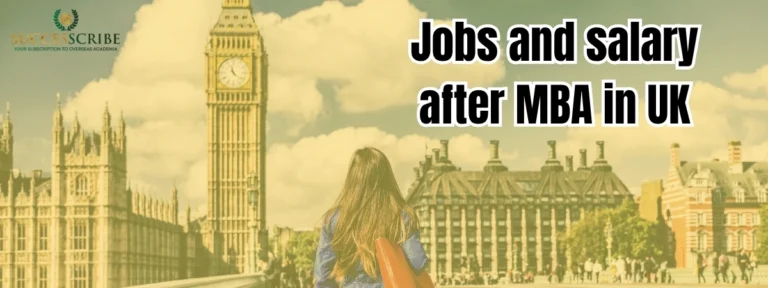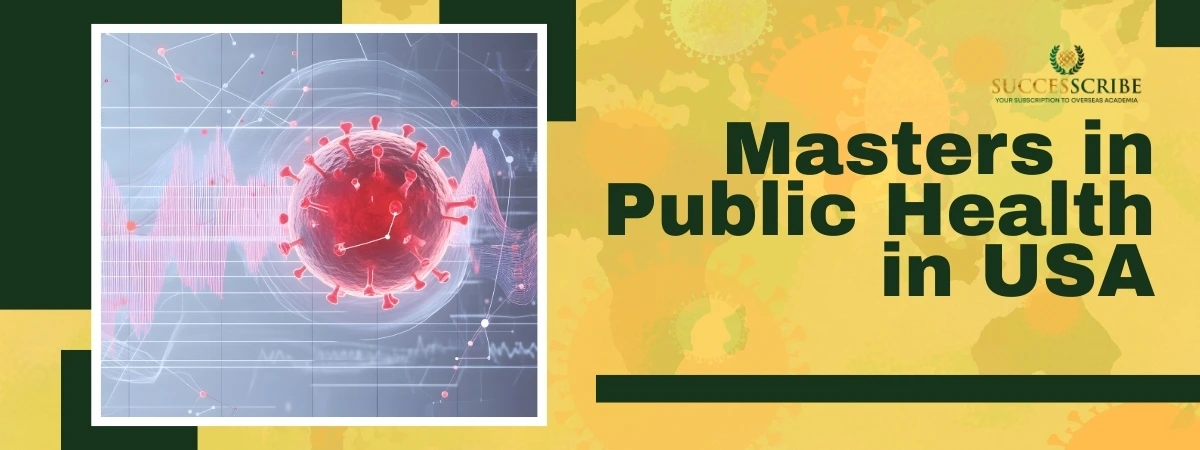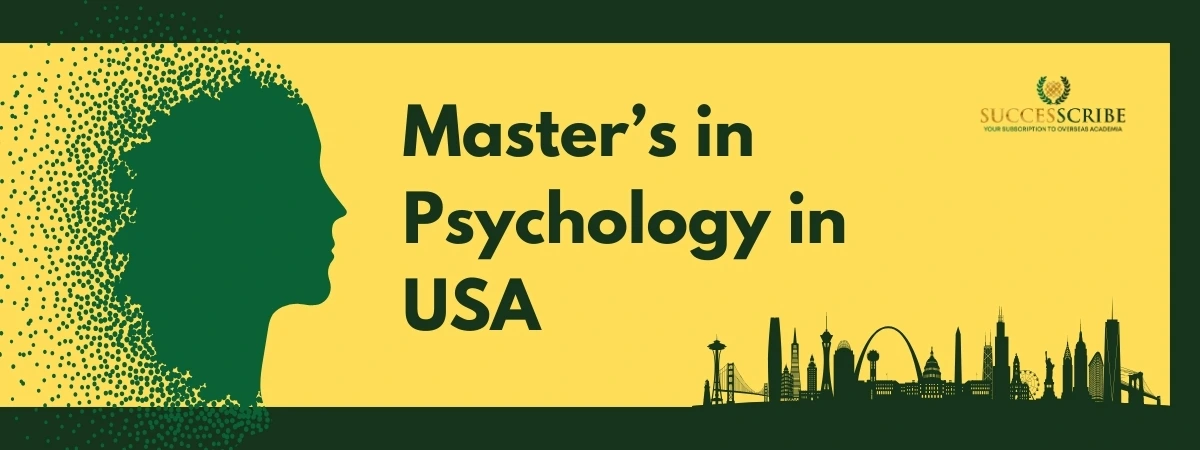In the U.S., the entry-level professional degree for practicing as a physical therapist is the Doctor of Physical Therapy (DPT) (not a Master’s). Many programs that once awarded Master’s degrees have transitioned to the DPT; accreditation by CAPTE and passing the NPTE licensure exam are mandatory steps to practice. Expect a 3-year DPT program after a bachelor’s, total program costs commonly in the $70k–$180k range depending on public/private and residency status, median U.S. salary $101,000/year. Pursuing a Masters in Physiotherapy in USA opens doors to a high-demand healthcare career with excellent professional and financial prospects.
Key Facts – Masters in Physiotherapy in USA
- Over 200 accredited DPT programs across the USA.
- Average program duration: 2–3 years full-time.
- Typical credit requirement: 90–100 credits (DPT); 30–45 credits (MS).
- Annual tuition fees: $22,000–$85,000, depending on institution and location.
- Median entry-level salary (physical therapist): $97,960 per year (2025 BLS).
Degree landscape: Masters vs Doctorate (what international students should know)
While the standard entry-level degree in the U.S. is now the DPT, the Masters in Physiotherapy in USA remains relevant for post-professional or bridge programs.
- Historically many U.S. schools offered Master of Physical Therapy (MPT/MSPT). Over the last two decades, the profession migrated to an entry-level Doctor of Physical Therapy (DPT) as the required clinical degree in the U.S. Most accredited programs now award the DPT; MPT programs are effectively phased out for entry-level practice. If you find a U.S. program described as a “Master’s in Physiotherapy,” check whether it is an entry-level program accredited for licensure – in most cases, international students aiming to become licensed PTs in the U.S. will seek a DPT.
- If you already hold a physiotherapy qualification (e.g., BPT/MPT from another country), there are bridge, advanced standing, or post-professional master’s and doctoral programs (and evaluation pathways) – but these are program-specific.
DPT vs Post-Professional Master’s in PT
| Feature | Doctor of Physical Therapy (DPT) | Post-Professional MS in Physiotherapy |
| Purpose | Entry-level, first professional degree to become a licensed PT. | Advanced training for already licensed or internationally educated PTs. |
| Duration | Typically 3 years (full-time). | Typically 1-2 years (full-time). |
| Prerequisites | Bachelor’s degree with specific science pre-requisites (Biology, Chemistry, Physics, Physiology, Statistics), GRE scores, observation hours. | Bachelor’s or equivalent in Physiotherapy. Often requires licensure or eligibility for licensure. |
| Curriculum | Comprehensive foundation in musculoskeletal, neuromuscular, cardiopulmonary, and integumentary systems; clinical reasoning, evidence-based practice, and extensive clinical rotations. | Focused on a specialization (e.g., Orthopedics, Neurology, Sports), research methodology, advanced clinical skills. |
| Outcome | Eligibility to sit for the National Physical Therapy Examination (NPTE) for state licensure. | Career advancement, specialization, academic/research roles, potential pathway to a US DPT for international graduates. |
Suggested Post: Masters in food science and technology in USA
Who should apply – candidate profile
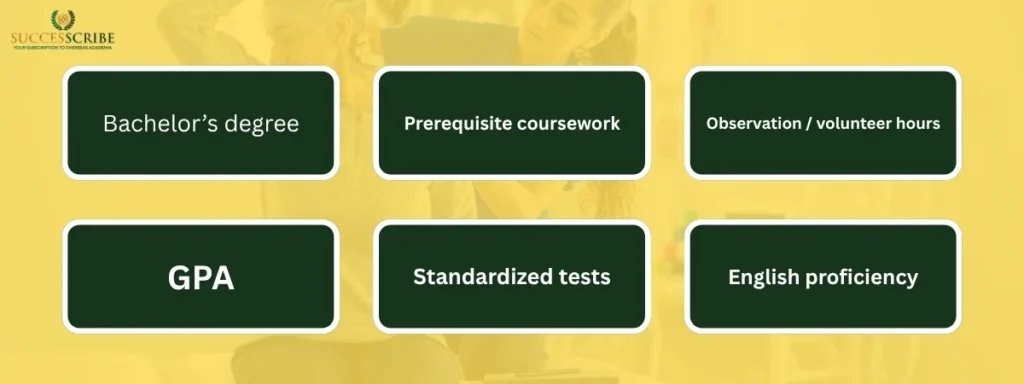
Candidates seeking a Masters in Physiotherapy in USA typically hold a bachelor’s degree, have completed prerequisite science courses, and possess volunteer or observation experience with licensed PTs.
Typical Applicants:
- Bachelor’s degree (any major; science preferred)
- Completed prerequisites: anatomy, physiology, chemistry, physics
- Observation/volunteer hours with licensed PTs
- Competitive GPA (≥ 3.2–3.5)
- GRE scores (if required by the program)
- International students: English proficiency (TOEFL/IELTS), credential evaluation
Typical admission requirements (check program pages for specifics)
- Bachelor’s degree (U.S. or equivalent).
- Prerequisite coursework: human anatomy & physiology (with lab), general biology, chemistry (general and sometimes organic), physics, statistics, kinesiology – exact list varies.
- Observation / volunteer hours: many programs list a minimum (varies widely; some request 40–100+ hours), often verified by a licensed PT.
- GPA: competitive applicants typically have cumulative GPAs ≥ 3.0–3.5, science GPA requirements differ by program.
- Standardized tests: GRE required by some programs (in decline, many waive it). Always confirm current policy on the program web page.
- English proficiency: TOEFL/IELTS for international applicants (minimums vary – commonly TOEFL iBT 80–100).
- Application portal: most U.S. PT programs accept applications through PTCAS (centralized application) – the PTCAS directory also includes cost comparisons and per-program requirements.
Suggested Post: Masters in health administration in USA
DPT Admissions Requirements: Benchmarks and Statistics
Gaining admission to a CAPTE-accredited DPT program is highly competitive. The application process is generally centralized through the Physical Therapist Centralized Application Service (PTCAS), which standardizes submissions for nearly all programs.
| Admission Criteria | Typical Minimum Requirement | Competitive Average |
| Cumulative GPA | 3.0 on a 4.0 scale | 3.5 – 3.7+ |
| Prerequisite Science GPA | 3.0 on a 4.0 scale | 3.4 – 3.6+ |
| Observation Hours | 40 to 100+ hours | 50 to 150 hours |
| Required Settings | Minimum of 2 (e.g., Inpatient, Outpatient, Geriatric) | 2 to 4 diverse settings |
| GRE Requirement | Varies by program (Many have dropped the requirement) | For required programs: Verbal 150+, Quantitative 150+, Analytical 4.0+ |
| Letters of Recommendation | 2 to 3 (Typically one from a licensed PT and one from a professor) | Strong, specific letters are crucial |
Key Prerequisite Coursework: DPT programs require a substantial foundation in the sciences. While specific credit hours vary, students typically must have completed:
- Biology I and II (with lab)
- Chemistry I and II (with lab)
- Physics I and II (with lab)
- Anatomy and Physiology I and II (often a combined series)
- Statistics
- Psychology (General and/or Abnormal)
Suggested Post: Masters in health informatics in USA
Post-Professional Pathways:The True Master’s and t-DPT
While the entry-level degree is the DPT, the term “Masters in Physiotherapy in USA” remains relevant for two specific groups:
- Specialization: U.S.-licensed PTs seeking an academic Master’s degree in a related field (e.g., Public Health, Healthcare Administration, or advanced specialized practice like Orthopedics or Neuroscience).
- Foreign-Trained PTs: International physical therapists who hold a Bachelor’s (BPT) or Master’s (MPT) degree from their home country and need a U.S. credential to meet current professional standards.
The primary pathway for the second group is the Post-Professional Doctor of Physical Therapy (t-DPT), a non-entry-level program designed for degree parity.
The Post-Professional Doctor of Physical Therapy (t-DPT)
The t-DPT is a bridge program designed for licensed physical therapists who graduated with a BPT or MPT. Its purpose is to augment their existing knowledge, skills, and behaviors to a level consistent with the current professional DPT standards, particularly in areas like differential diagnosis, advanced imaging, pharmacology, and health care systems management.
Key Features of t-DPT Programs:
- Format: Predominantly offered in a distance-based (online/hybrid) format, allowing licensed practitioners to continue working.
- Duration: Much shorter than the entry-level DPT, often ranging from 12 to 24 months of part-time study.
- Credit Requirements: Students with an MPT may only need to complete 16 to 20 credit hours to bridge the gap, as significant credits are transferred from their prior master’s education. BPT holders usually require a more extensive curriculum.
| T-DPT Applicant Profile | Required Credits (Estimate) | Typical Duration (Part-Time) |
| MPT Holder (Foreign-Trained) | 16 to 20 credits | 12 to 18 months |
| BPT Holder (Foreign-Trained) | 20 to 30 credits | 18 to 24 months |
Admission for International Applicants (t-DPT)
Foreign-trained applicants face specific requirements:
- Credential Evaluation: A course-by-course academic credential evaluation by an approved service (e.g., FCCPT, WES, or a NACES member) is mandatory. This evaluation determines if the international degree is equivalent to a U.S. BPT or MPT.
- English Language Proficiency: TOEFL, IELTS, or Duolingo English Test scores are required unless the applicant is licensed in a U.S. state that exempts them from this requirement for licensure purposes.
- Licensure/Practice Verification: Applicants must typically provide documentation of current licensure and at least one year of professional employment as a physical therapist.
Specialized Academic Master’s Degrees (Actual MPT/MS)
Some U.S. universities offer a post-professional Master of Science (MS) in Physical Therapy or a related field (like MS in Rehabilitation Science, MS in Advanced Clinical Practice, or MPH in Global Health). These degrees are not for initial licensure but are designed for licensed PTs – including those who have completed a DPT – seeking a research-intensive path or specialization.
- Focus: Research methodology, advanced clinical theory, teaching, and specific sub-specialties (e.g., musculoskeletal, neurological, cardiopulmonary).
- Target Audience: PTs planning careers in academia, clinical research, or advanced leadership.
- Curriculum: Heavy emphasis on statistics, grant writing, thesis/capstone project, and specialized electives.
Top Universities for Masters in Physiotherapy
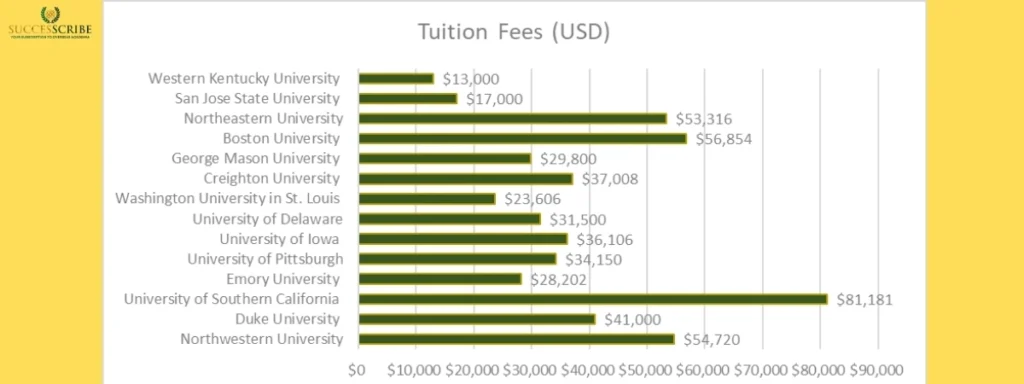
The USA’s premier physiotherapy programs consistently rank among the best globally for research, clinical exposure, and graduate outcomes. Several of the top-ranked institutions in the U.S. offer exceptional Masters in Physiotherapy in USA programs, providing strong clinical exposure and research training. Below is a ranking of leading institutions, based on their 2025 world ranking and tuition fees.
| University Name | QS World Rank | Program | Tuition Fees (USD) | Tuition Fee (INR) |
| Northwestern University | #50 | Doctor of Physical Therapy (DPT) | $54,720 | ₹45.4 Lakh |
| Duke University | #61 | Doctor of Physical Therapy (DPT | $41,000 | ₹34.0 Lakh |
| University of Southern California | #125 | Doctor of Physical Therapy (DPT) | $81,181 | ₹67.3 Lakh |
| Emory University | #196 | Doctor of Physical Therapy (DPT) | $28,202 | ₹23.4 Lakh |
| University of Pittsburgh | #275 | MS in Physical Therapy | $34,150 | ₹28.3 Lakh |
| University of Iowa | #530 | Doctor of Physical Therapy (DPT) | $36,106 | ₹29.9 Lakh |
| University of Delaware | #553 | Doctor of Physical Therapy (DPT) | $31,500 | ₹26.1 Lakh |
| Washington University in St. Louis | #176 | Doctor of Physical Therapy (DPT) | $23,606 | ₹19.6 Lakh |
| Creighton University | #601 | Doctor of Physical Therapy (DPT) | $37,008 | ₹30.7 Lakh |
| George Mason University | #801–1000 | Doctor of Physical Therapy (DPT) | $29,800 | ₹25 Lakh (approx.) |
| Boston University | #93 | Doctor of Physical Therapy (DPT) | $56,854 | ₹47.2 Lakh |
| Northeastern University | #160 | Doctor of Physical Therapy (DPT) | $53,316 | ₹44.3 Lakh |
| San Jose State University | #1201 | MS in Rehabilitation Science | $17,000 | ₹14.2 Lakh |
| Western Kentucky University | MS in Physical Therapy | $13,000 | ₹10.8 Lakh |
Suggested Post: Top medical colleges in USA for Indian students
Costs, Scholarships, Living Expenses
Studying in the U.S. is expensive, especially at private universities and in major urban centers. Still, a range of scholarships, assistantships, and work-study opportunities are available. Tuition for a Masters in Physiotherapy in USA ranges widely, making it essential for students to explore scholarships, assistantships, and financial aid options.
| Expense | Amount per Year (USD) | Amount per Year (INR) |
| Tuition | $22,000–$85,000 | ₹18–70 Lakh |
| Living Expenses (avg.) | $12,000–$20,000 | ₹10–16 Lakh |
| Health Insurance | $1,000–$2,000 | ₹80,000–1.6 Lakh |
| Books/Supplies | $1,000–$2,000 | ₹80,000–1.6 Lakh |
| Miscellaneous | $2,000–$3,000 | ₹1.6–2.4 Lakh |
Scholarship Options
- University merit/need scholarships (10–30% of international students receive aid)
- External: Fulbright, Chevening, AAUW, APTA Minority Scholarships
- Assistantships (limited for clinical programs)
Licensure: NPTE and State Requirements
To work as a licensed Physical Therapist (PT) in the U.S., every graduate must go through the national licensure process. This ensures that all PTs meet the same professional and safety standards before practicing.
1. National Physical Therapy Examination (NPTE)
- The NPTE is the mandatory national exam for physical therapists, conducted by the Federation of State Boards of Physical Therapy (FSBPT).
- Eligibility: You must graduate from a CAPTE-accredited DPT program (or have an approved foreign credential evaluation if trained outside the U.S.).
- Exam format: Computer-based, multiple-choice, held several times each year.
- Scoring: A passing scaled score is 600/800.
- Attempts: Candidates can attempt up to 3 times in a 12-month period, and a maximum of 6 lifetime attempts.
2. State Licensure Requirements
Passing the NPTE is not enough you must also apply for a license in the state where you want to practice. Each state has its own rules:
- Jurisprudence exam: Many states require a short exam on local laws and ethics.
- Background checks: Fingerprints or criminal background checks may be required.
- Application fees: Typically between $100 – $300, depending on the state.
- License renewal: Most states require renewal every 1–2 years, with proof of continuing education (CEU credits).
3. NPTE Pass Rates
- On average, U.S. PT programs report first-time pass rates above 85–90%.
- CAPTE requires schools to publish two-year ultimate pass rates, which can help you compare program quality.
4. Step-by-Step Path to Licensure
- Graduate from a CAPTE-accredited DPT program.
- Register with FSBPT and schedule your NPTE exam.
- Apply for state licensure in the state you plan to practice.
- Pass the NPTE (and state-specific exams if required).
- Receive your license and start practicing as a Physical Therapist.
If you already hold a PT degree from abroad, you may need a credential evaluation and possibly additional coursework before being allowed to sit for the NPTE. Always check with the state licensing board early in your process.
Suggested Post: Masters in international business in USA
Career Prospects & Salary for Physiotherapists in the USA
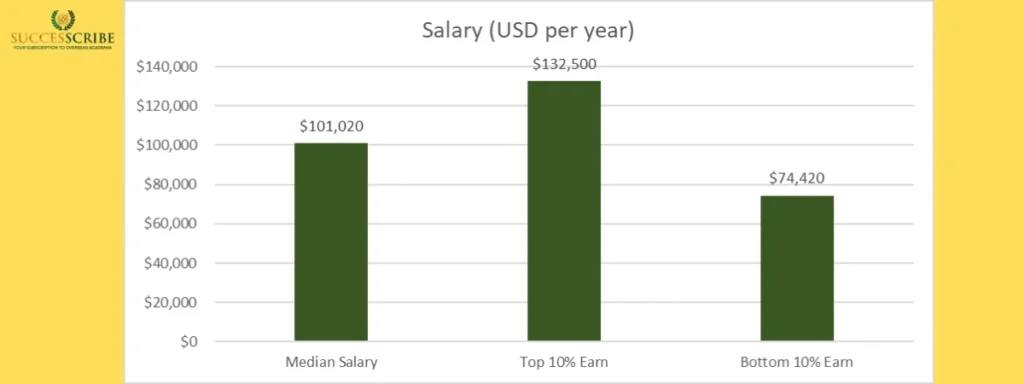
A career in physiotherapy (physical therapy) in the U.S. is not only rewarding but also offers strong job security and excellent salaries. With the growing need for rehabilitation, aging population, and emphasis on non-surgical, drug-free treatment, physical therapists are in high demand across the country. Completing a Masters in Physiotherapy in USA can lead to high-paying roles in hospitals, clinics, sports medicine, and research.
Salary Snapshot (U.S. Bureau of Labor Statistics)
| Category | Salary (USD per year) | Salary (USD per hour) |
| Median Salary | $101,020 | $48.56 |
| Top 10% Earn | $132,500+ | $63.70 |
| Bottom 10% Earn | $74,420 | $35.78 |
This means a fresh graduate can expect to start around $70k–$80k, while experienced or specialized PTs can earn well above $130k annually.
Salary by Work Setting
| Work Setting | Average Salary (USD/year) | Notes |
| Home Healthcare Services | $111,500 | Highest-paying sector |
| Nursing & Residential Care Facilities | $106,300 | Growing demand for elderly care |
| Hospitals (General/Medical) | $103,000 | Stable employment |
| Outpatient Care Centers | $100,800 | Common work setting for PTs |
| Educational Institutions | $85,000 | Lower pay but good for teaching/research |
Salary by State (Top 5 Paying States for PTs)
| State | Average Salary (USD/year) | Why High-Paying? |
| California | $118,500 | High demand + cost of living |
| Nevada | $115,200 | Growing healthcare sector |
| New Jersey | $113,400 | Proximity to NYC & healthcare hubs |
| Texas | $108,900 | Large population, strong demand |
| Massachusetts | $108,700 | Aging population & top hospitals |
Job Outlook & Growth
- Growth rate: Employment for physical therapists is expected to grow 15% from 2022 to 2032 – much faster than the average for all occupations.
- New jobs expected: Around 38,000 new PT jobs will open by 2032.
Demand drivers:
- Aging population (Baby Boomers).
- Increase in chronic conditions (arthritis, diabetes, stroke).
- Rising interest in sports medicine & injury rehab.
- Emphasis on drug-free pain management after the opioid crisis.
Specializations that Boost Salary
Becoming a board-certified specialist through the American Board of Physical Therapy Specialties (ABPTS) can increase career opportunities and pay.
| Specialization | Typical Salary Range (USD/year) | Career Path |
| Orthopedic PT | $100k–$130k | Clinics, sports injuries |
| Neurologic PT | $95k–$125k | Stroke, brain & spinal rehab |
| Geriatric PT | $90k–$120k | Elderly care facilities |
| Sports PT | $105k–$135k | Sports teams, athletes |
| Pediatric PT | $85k–$115k | Children’s hospitals & clinics |
Conclusion
Embarking on a physiotherapy journey in the United States is a gateway to a career that combines science, empathy, and innovation. With a CAPTE-accredited program, rigorous clinical training, and exposure to cutting-edge rehabilitation techniques, graduates are prepared to make a meaningful impact on patients’ lives from day one. In essence, a Master’s or DPT in the USA is more than a degree; it is a launchpad for a career that empowers, heals, and inspires, making it one of the smartest decisions for anyone committed to shaping the future of healthcare. For international students, a Masters in Physiotherapy in USA equips them with skills, credentials, and clinical expertise needed to succeed in the U.S. healthcare system.
FAQs
Can I become a licensed Physical Therapist in the USA with a Master’s in Physiotherapy?
Most U.S. programs now require a Doctor of Physical Therapy (DPT) for licensure. While some universities may offer a Master’s, international students usually pursue a DPT or a post-professional master’s/bridge program to meet U.S. licensure requirements.
How long does it take to complete a DPT program in the USA?
An entry-level DPT typically takes 3 years post-bachelor’s degree. Programs combine classroom learning, lab work, and clinical rotations totaling thousands of hours to prepare you for real-world practice.
What are the average costs of studying physiotherapy in the USA?
Total tuition for a DPT ranges from $70,000 to $180,000, depending on whether the program is public or private and your residency status. Additional costs include living expenses, clinical placement travel, books, and licensure fees.
What are the career prospects for physiotherapists in the USA?
Physical therapists enjoy strong demand and a median salary of $101,020/year (May 2024, BLS). Job growth is projected at 15% through 2032, with opportunities in hospitals, outpatient clinics, sports medicine, geriatrics, pediatrics, research, and private practice.
Are scholarships or financial aid available for international physiotherapy students?
Many universities offer merit-based scholarships, assistantships, or need-based awards, but international students are generally ineligible for U.S. federal aid. Private loans or institutional scholarships are the primary funding options.
Related Post
Bachelor of nursing in USA
Dental hygienist course in USA
Fulbright scholarship in USA
Masters in biotechnology in USA




